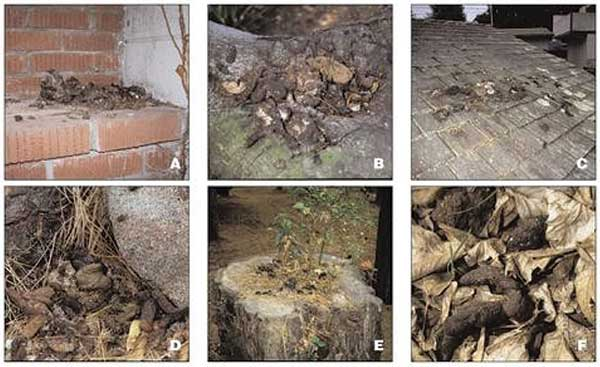Description: Raccoon Roundworm is a disease caused by a parasite that lives in the intestines of raccoons. The roundworm survives by feeding on nutrients that the raccoon has digested.
Cause: Raccoons shed millions of the microscopic roundworm eggs in their feces. People may encounter the eggs through direct contact with raccoon droppings or by touching a contaminated area or object. If they don’t wash their hands they may later transfer the eggs to their mouths. Small children are particularly vulnerable because they tend to put their hands and other objects into their mouths. You may also become infected by breathing in the raccoon roundworm eggs.
Please note, Wildlife Busters highly recommends our Animal Decontamination and Sanitization Services for most raccoon removal circumstances, especially where raccoons have been residing in your commercial or residential property for a period of time creating latrines throughout the encroached upon area.
Symptoms: Nausea, skin irritations, tiredness, liver enlargement, loss of coordination and muscle control, blindness in attentiveness and coma.
Treatment: Seek medical attention immediately.
Other Facts:
- Have your pets “wormed” three to four times each year.
- To prevent your children from encountering roundworm eggs, keep them away from areas that are frequented by raccoons. Cover their sandboxes. Train them to wash their hands and scrub their fingernails after playing outdoors, especially if they were in your garden or the sandbox.
- Discourage raccoons from living in and around your home
- Prompt removal and destruction of raccoon feces will reduce the risk of human exposure. Raccoons typically defecate at the base of trees, on fallen logs, on large rocks, and woodpiles, and in barns or other outbuildings. Raccoon feces may also be found in children’s sandboxes, attics, fireplaces, garages, decks, rooftops, haylofts, and compost piles.
Typical raccoon latrines can be found in urban/suburban environments. Examples of these latrines are seen in the following set of pictures: (A) Latrine on a chimney ledge, illustrating the climbing abilities of raccoons and their tenacity in maintaining latrines. (B) Large latrine in the crotch of an oak tree approximately 3.5 m (15 feet) above ground. The sides of the tree were visibly stained with fecal residue that rain had washed down the trunk, contaminating a child’s play area below with Baylisascaris procyonis eggs. (C) Large latrine, in use for years on a house roof, unknown to the home owner. (D) Latrine site on the ground near downed timber and rocks in a suburban yard. Note the variety of fecal materials (including seeds, crustacean shells, and human refuse), reflecting the diversity of the raccoon diet. The homogeneous-appearing fresh scat in the center is composed of digested pet food. (E) Latrine on a stump in a suburban park with plants sprouting from seeds in the scat. Granivorous birds and mammals are attracted to such locations, as are curious children. (F) Raccoon scat hidden in leaf litter in a suburban back yard, indicating how occult contamination may be.
Additional Resources:

 Receive FREE wildlife Tips!
Receive FREE wildlife Tips!

